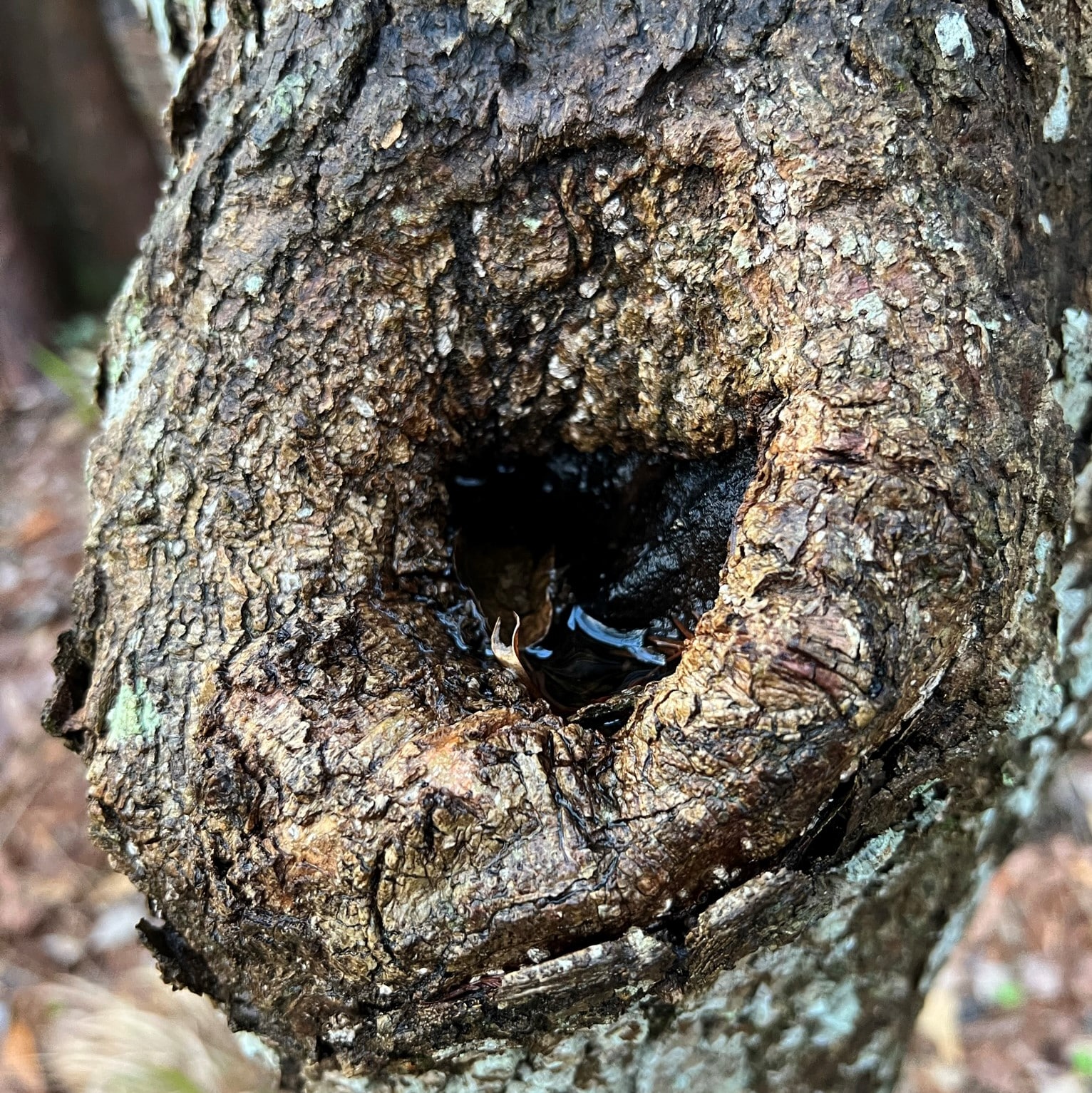Not all holes in trees harbor woodland creatures like birds, squirrels or racoons. Some of them hold rainwater that support a diverse group of aquatic insects and other invertebrate organisms. The drama in these microhabitats can be interesting.
Tree holes that hold water are typically places where a branch has died, leaving a cavity with a solid bottom that holds water. They can be any size and occur at any place along the vertical profile of a tree, although we are most likely to notice those closest to the ground.
Along with rainwater that drains into them from the trunk, dead leaves and debris accumulate over time, providing a rich soup of decayed organic matter – fine material on the bottom and loose material above. During periods of heavy rain, a pool of water will appear, but few tree holes hold water year-round.

These aquatic microhabitats are home to a surprisingly diversity community of aquatic organisms, including microorganisms, like bacteria, fungi and small, single-celled organisms. The aquatic larvae of flies make up the majority of large tree hole organisms. These aquatic larvae are specialist at living in habitats with little or no oxygen, using modified appendages to connect them to the atmosphere.
Mosquito larvae are the best known of these, using breathing tubes ringed with fine hairs that act to break the surface tension of the water and “hang” themselves there – with the breathing tubes open to the atmosphere. Rat-tailed maggots take this approach even further, using telescoping breathing tubes that allow them to graze the rich organic materials deep in their favorite habitats (seeps and tree holes). Read more about these amazing insects here.
As many as 43 species of insects have been reported in tree holes in the eastern U.S., mostly Diptera, but also the larvae and adults of a few aquatic beetles. My favorite is the Elephant Mosquito, the largest of our North American species. Adults can be about upwards of 3/4 inch in size with metallic blue/green colors.
What is neat about this species is that adults do not bite! Both sexes feed on nectar and tree sap as adults. The larvae are voracious predators on other mosquito larvae (Tiger Mosquitoes) that share tree holes and other small aquatic habitats, making them what could be considered the “best” kind of mosquito – they do not bite and eat other mosquitoes – Win-Win!
Their ecology is truly tied to these microhabitats. Females will typically lay a single egg in any given tree hole or only a few in larger pools of water, to ensure that the larvae will have enough food (other larvae) to grow to maturity. Read more here.
There are few places in our natural world that are not occupied by creatures that have adopted their lifestyle to fit. Tree holes are one of these places and they are more common than we realize. Check them out the next time you venture into the “wild”.
Hope to see you in our great outdoors!